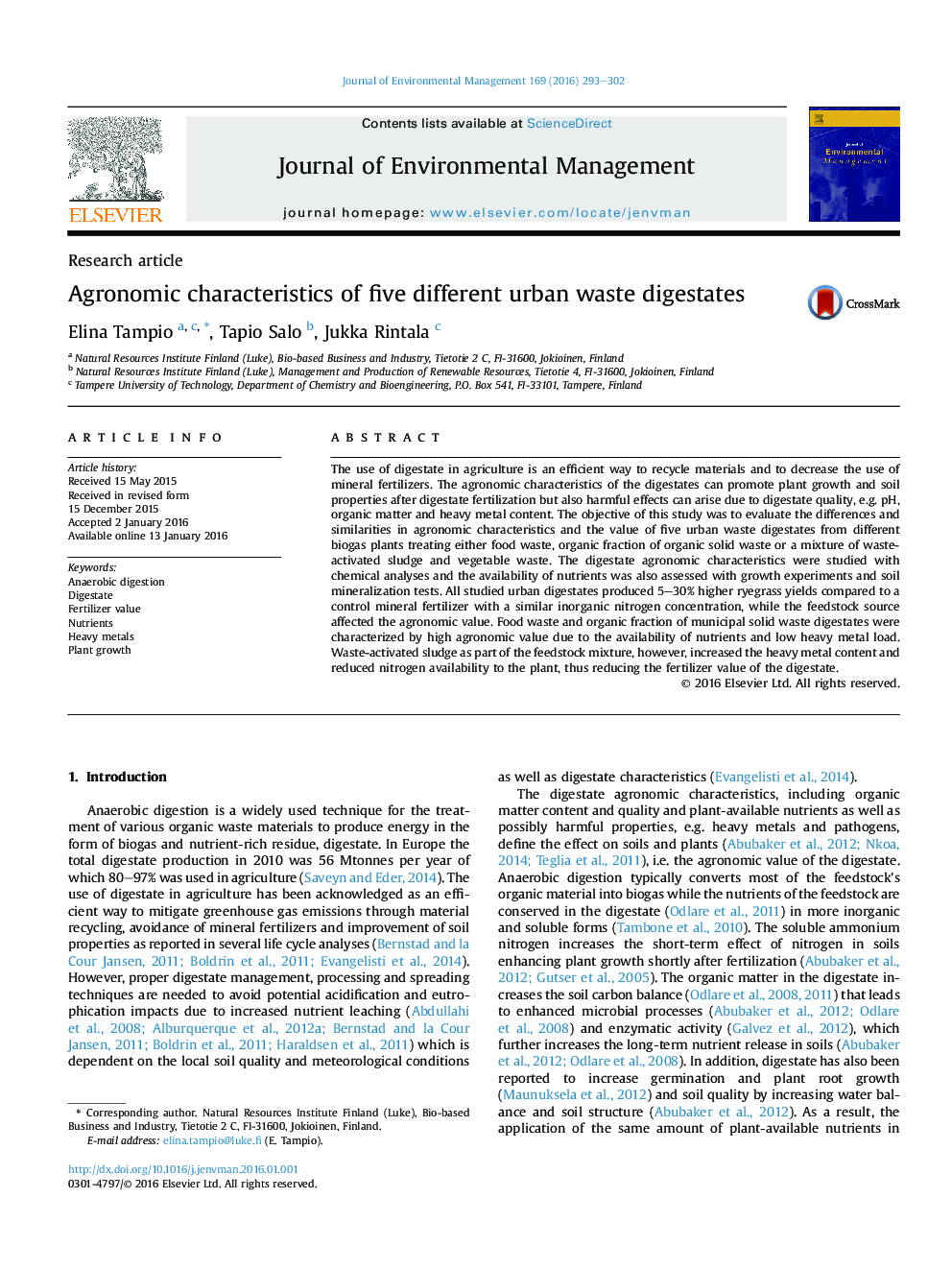| Article ID | Journal | Published Year | Pages | File Type |
|---|---|---|---|---|
| 1055460 | Journal of Environmental Management | 2016 | 10 Pages |
•5–30% increased plant growth with all digestates compared to mineral N fertilizer.•Agronomic characteristics were dependent on the feedstock origin and composition.•FW and OFMSW digestates showed potential as fertilizers in agriculture.•Waste-activated sludge in feedstock mixture decreased agronomic value.
The use of digestate in agriculture is an efficient way to recycle materials and to decrease the use of mineral fertilizers. The agronomic characteristics of the digestates can promote plant growth and soil properties after digestate fertilization but also harmful effects can arise due to digestate quality, e.g. pH, organic matter and heavy metal content. The objective of this study was to evaluate the differences and similarities in agronomic characteristics and the value of five urban waste digestates from different biogas plants treating either food waste, organic fraction of organic solid waste or a mixture of waste-activated sludge and vegetable waste. The digestate agronomic characteristics were studied with chemical analyses and the availability of nutrients was also assessed with growth experiments and soil mineralization tests. All studied urban digestates produced 5–30% higher ryegrass yields compared to a control mineral fertilizer with a similar inorganic nitrogen concentration, while the feedstock source affected the agronomic value. Food waste and organic fraction of municipal solid waste digestates were characterized by high agronomic value due to the availability of nutrients and low heavy metal load. Waste-activated sludge as part of the feedstock mixture, however, increased the heavy metal content and reduced nitrogen availability to the plant, thus reducing the fertilizer value of the digestate.
